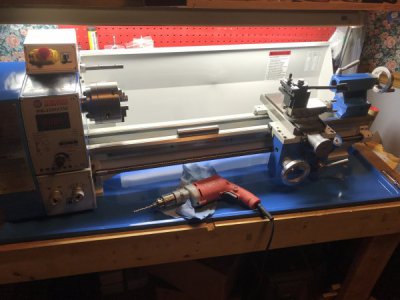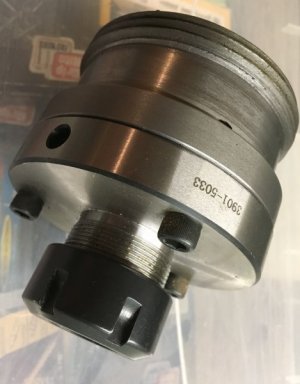Jay, let me see if I can make this a bit clearer for you. You have a Weiss WBL250F, with a 1.02" spindle bore. It has a 3-stud spindle mount; this means that any chuck (collet or otherwise) must either have the same 3-bolt arrangement on the back of the chuck or you have to mount the chuck to a back plate that has that 3-bolt pattern.
I do not know if anyone makes a direct-mount ER chuck for your spindle; I'm sure someone knows as this is equivalent to a Seig SC6. You can use either an ER-32 or ER-40 chuck. The ER-40 collets go up to 1", which takes full advantage of the spindle bore you have. To use it, you either have to find a direct mount ER-40 chuck or find a back plate and mount an ER-40 chuck to it. You can also do the same with a 5C collet chuck. As others have said, it makes no sense to mount a MT to ER chuck if you want to pass material through the spindle bore.
You finally mentioned that you need to hold an 8mm tube. A collet is probably the best way to hold such a tube so if you're going to do a lot of work with such material then a collet chuck is appropriate. You can get away with using a jawed chuck (3, 4 or 6 jaw chuck) if you're careful and only need to do light work to the piece.
A lot of new guys with a new lathe think that they need a collet chuck. I don't know, to be a part of the gang maybe? The reality is that the vast majority of work in a hobby shop can be done with your simple jawed chucks. Collets are good for turning finished or threaded or thin-walled parts. They are also good if you turn a lot of nominal sized stock; 5C is good for this. Buy a collet chuck if you need it but be sure you know why you need it.



